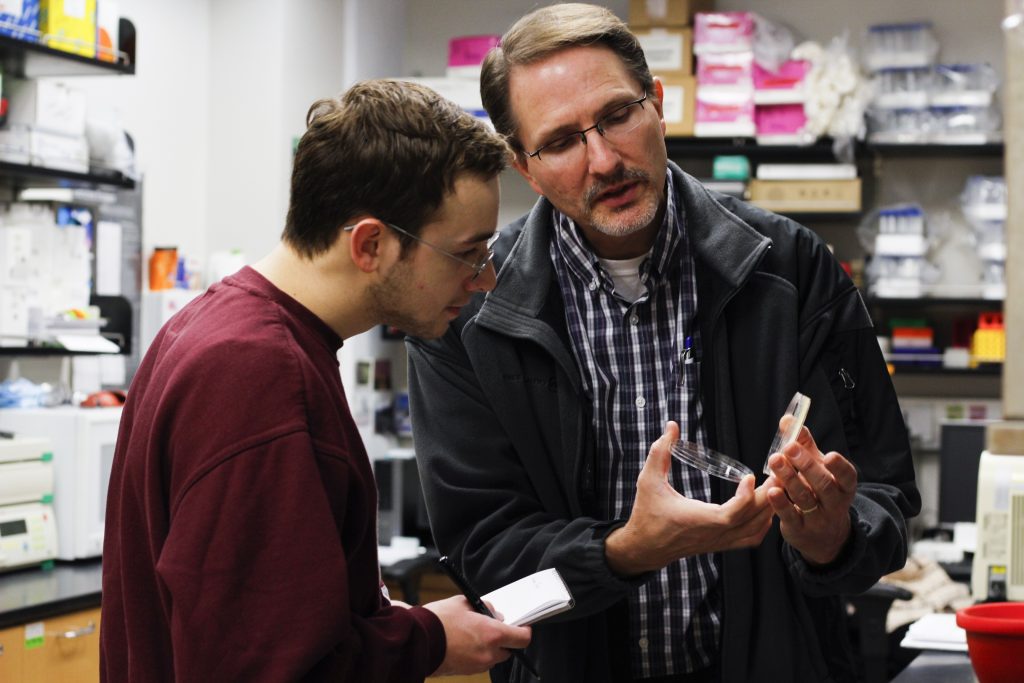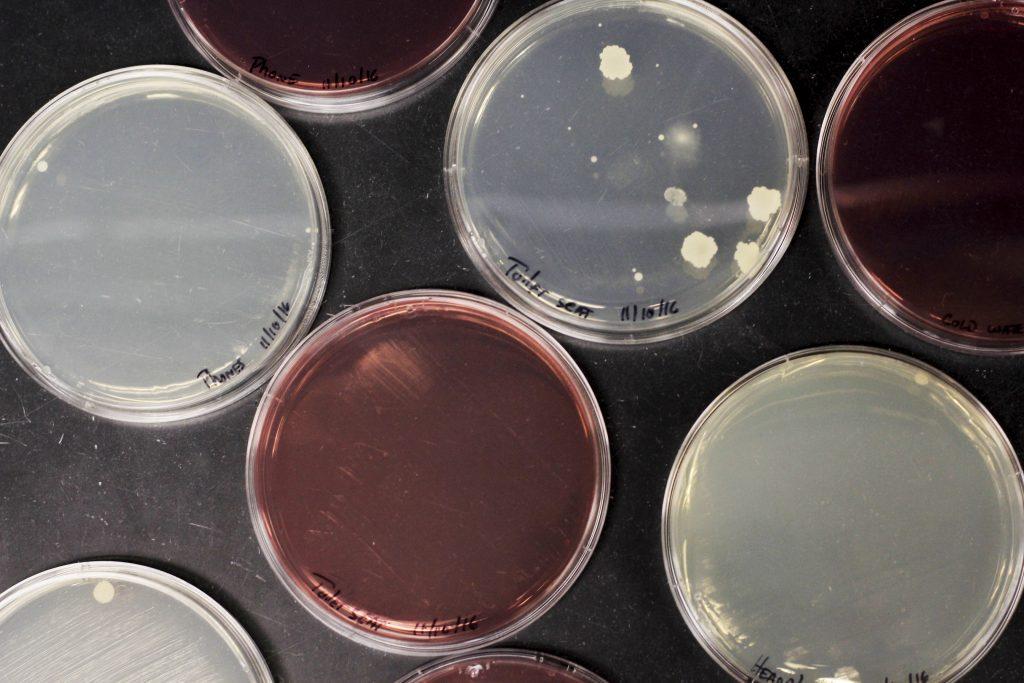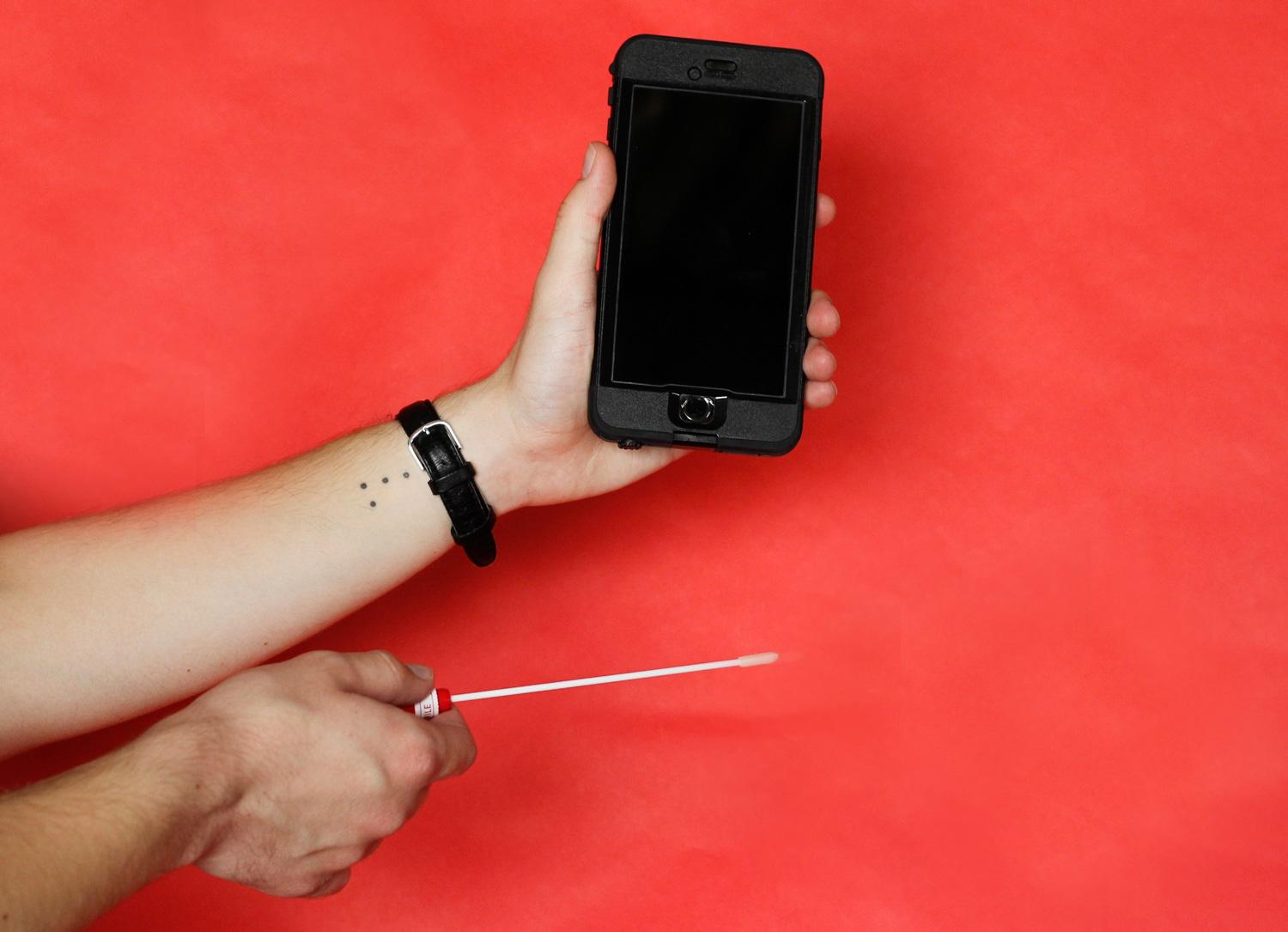Finals are right around the corner and getting sick is not an option. How do you protect yourself, your grades and your wallet from the costs of getting sick? Understanding the nature of germs is definitely a step in the right direction.
To learn more about germs, those tiny things that live all around us, we visited Rodney King, a microbiology professor. He helped us make some bacterial cultures.
A bacterial culture is a research technique which uses a nutrient-rich medium that allows the growth of bacterial samples. Based on controlled conditions and bacterial growth, a scientist can identify what kind of bacteria is present in a sample.
After swabbing a cell phone, a pair of headphones, a sink knob, a toilet seat, a door knob and an elevator button, we ran the swabs over two types of culture mediums. The first medium was a general growth medium called LB, or Luria-Bertani broth, which allows multiple types of bacteria to grow together. The second medium was a differential medium, meaning it inhibits the growth of all bacteria except one type. In this case, this culture only allowed for the growth of fecal bacteria.
The first medium was a general growth medium called LB, or Luria-Bertani broth, which allows multiple types of bacteria to grow together. The second medium was a differential medium, meaning it inhibits the growth of all bacteria except one type. In this case, this culture only allowed for the growth of fecal bacteria.
A common misconception that many people have is that bacteria grows and multiplies all over the place. However, this isn’t necessarily true, at least in the case of objects like cell phones and doorknobs.
“The bacteria sitting on these things aren’t increasing in number, there are no nutrients there,” King said. “They’ve been deposited there and are just hanging out.”
Bacterial microorganisms have to have certain nutrients and conditions to grow, like water and certain temperatures.
“Same is true for the viruses,” King said. “Viruses have to have a cell in order to grow. They need a host.”
If you understand this, then you know that wiping off your phone regularly can go a long way in keeping you healthy.
After depositing the samples, we incubated them at 37 degrees Celsius to simulate the average human body temperature. To my personal relief (but professional disappointment), my phone and headphones provided little-to-no bacteria, including no fecal contamination. In fact, none of the samples showed fecal contamination.
To my personal relief (but professional disappointment), my phone and headphones provided little-to-no bacteria, including no fecal contamination. In fact, none of the samples showed fecal contamination.
In all honesty, I think a janitor had just cleaned the bathroom I collected my swabs from, which shows that they do a pretty good job cleaning the bathrooms. The sink knob didn’t present any bacteria at all, and the toilet only presented some general bacteria, which could be any number of things.
Perhaps the next time I do bacterial swabs I should swab someone with less impressive hygiene habits, like maybe one of my roommates.
If you’re concerned about what’s around you, make sure you wash your hands regularly. Bacteria and viruses can only hurt you if they are allowed to grow, so it is important to keep yourself clean. Your body also provides you with natural defenses and normal bacterial flora.
“We are covered with organisms that are beneficial both on our surface and also inside of our gut,” King said.
Normal flora is produced from natural bodily functions and can actually prevent the growth of pathogens. However, this doesn’t mean that you don’t have to shower because healthy microorganisms can also cause infection if they are introduced to foreign areas of the body. But there are healthy ways that you can give your helpful bacteria a leg up.
“A good, balanced diet and so forth helps maintain your normal flora,” King said.
Eating things like yogurt can introduce helpful organisms to your intestines and help regulate your body. It’s weird to think about, but you have friendly organisms living inside of you that can keep you from getting sick. Beans and bananas are two other foods you can eat to help your intestinal bacteria.
Go thank your little bacterial buddies and eat some yummy food.


